Amphonyx lucifer lucifer
|
|
Updated as per Fauna Entomologica De Nicarauga, November 2007
Updated as per Sphingidae (Lepidoptera) de Venezuela, Compilado por: María Esperanza Chacín; December 2009
Updated as per More, Kitching and Cocucci's Hawkmoths of Argentina 2005, December 2009
Updated as per personal communication with Ben Trott (Playa del Carmen, Quintana Roo, Mexico); February 25, 2012
Updated as per personal communication with Hubert Mayer (Ecuador, Peru, Brazil); June 4, 2014
Updated as per personal communication with Sergio D. Ríos Díaz in CATÁLOGO DE LOS SPHINGIDAE (INSECTA: LEPIDOPTERA) DEPOSITADOS EN
EL MUSEO NACIONAL DE HISTORIA NATURAL DEL PARAGUAY; sent to me in July 2014 by Sergio D. Ríos Díaz.
Updated as per personal communication with Ezequiel Bustos (Shilap revta. lepid. 43 (172) diciembre, 2015, 615-631 eISSN 2340-4078 ISSN 0300-5267), January 4, 2016
|
Amphonyx lucifer lucifer
am-FOH-nicksM LEW-sih-fer
Rothschild and Jordan, 1903
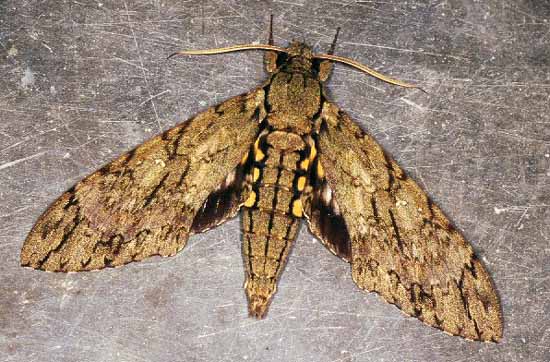
Amphonyx lucifer lucifer from Rancho Grande,
H. Pittier National Park, Venezuela
courtesy of Paolo Mazzei.
This site has been created by Bill Oehlke.
Comments, suggestions and/or additional information are welcomed by Bill.
TAXONOMY:
Family: Sphingidae, Latreille, 1802
Subfamily: Sphinginae, Latreille, [1802]
Tribe: Sphingini, Latreille, 1802
Genus: Amphonyx Poey, 1832 ...........
Species: lucifer lucifer Rothschild and Jordan, 1903
|
DISTRIBUTION:
Amphonyx lucifer
lucifer (Wing span: 14 - 18cm], flies in tropical and
subtropical lowlands in Mexico, specimen type locality,
and generally from
Belize: Corozol, Orange Walk, Cayo, Toledo; and
Guatemala: Izabal (JM);
Nicaragua: Jinotega, Rio San Juan, and probably
Matagalpa, Boaca, Chontales;
Costa Rica: Puntarenas, Guanacaste, Lemon, Alajuela,
Heredia, San Jose;
south through
Venezuela: Aragua, Bolivar, Carabobo, Lara, Tachira, Trujillo, Yaracuy, Zulia; to
Brazil;
Bolivia;
Paraguay: San Pedro; Guaira; Canindeyu;
Argentina: Misiones
and
Ecuador: Orellana.
This picture was taken in Yasuni, Ecuador,
September 7, 2002 - 1:33 AM, by Steve Graser.
In Bolivia it has been observed in Santa Cruz: Florida, Mataral;
Ichilo, La Víbora;
La Paz: Murillo, Río Zongo, 750m; Santa Cruz: Santa Cruz. |
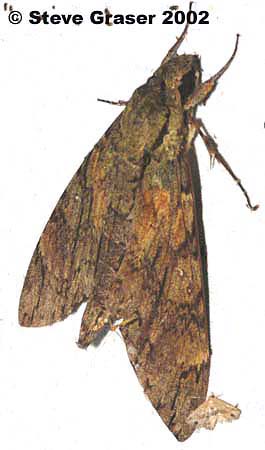 |
This species is now listed as Amphonyx lucifer, but was once classified as a Cocytius species, and
probably will be listed as Cocytius lucifer for some time. Recently Amphonyx has been resurrected as a genus
due to significant differences in genitalia between Cocytius and Amphonyx species.
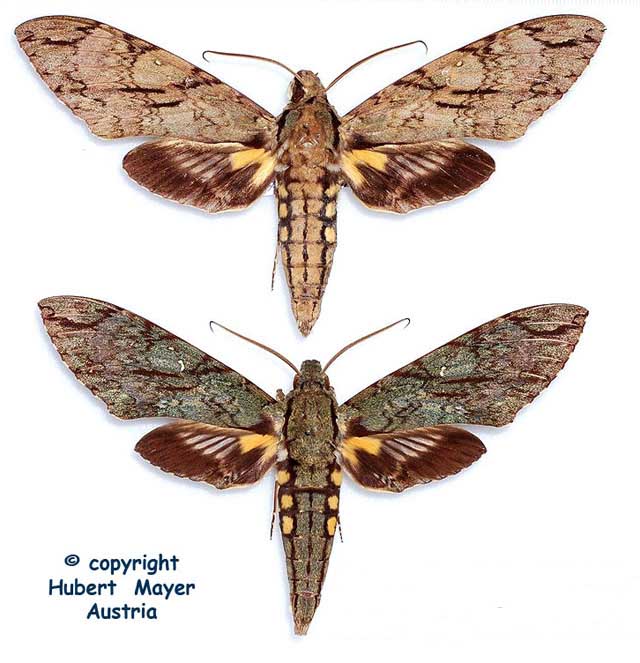
Amphonyx lucifer males, Napo and Cotopaxi
December 1999, courtesy of Hubert Mayer
CATE: "Thorax upperside with black markings prominent against the greyish green ground colour. Markings of the upperside, marginal area of the
hindwing, and the underside of the wings often more or less walnut brown. Abdomen upperside with mesial line usually prominent, but sometimes faint or widely
interrupted.
"Forewing upperside with dark streaks posterior to veins M3 and CuA1 well marked, though often narrow."
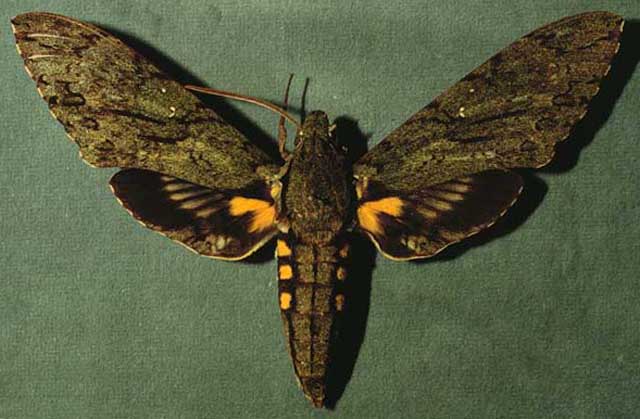
Amphonyx lucifer male, 147mm, Costa Rica, courtesy of Dan Janzen.
FLIGHT TIMES:
Amphonyx lucifer lucifer adults
nectar at flowers and brood continuously in
the tropics. In Costa Rica moths have been recorded in all months
except perhaps March.
In Bolivia there are records for March-April and June.
ECLOSION:
Pupae probably wiggle to surface from subterranean chambers just prior to eclosion.
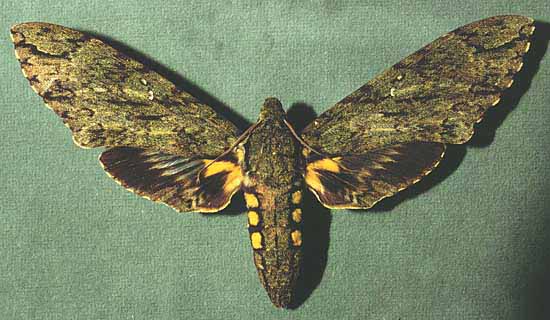
Amphonyx lucifer female courtesy of Dan Janzen.
SCENTING AND MATING:
Females call in the males with a pheromone released from a gland at the tip of the
abdomen.
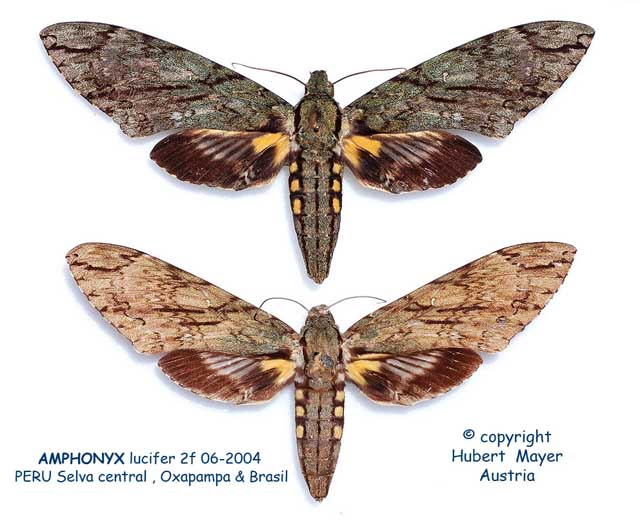
Amphonyx lucifer females, Oxapampa, Selva central, Peru, and Brazil,
June 2004, courtesy of Hubert Mayer
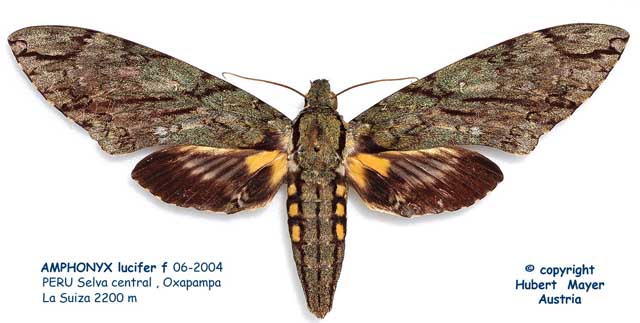
Amphonyx lucifer females, Oxapampa, Selva central, Peru,
180mm, June 2004, courtesy of Hubert Mayer
EGGS, LARVAE, PUPAE:
Caterpilars feed on Annona purpurea and Desmopsis schippii and probably other species
in the custard apple family (Annonaceae).
The larvae are clear green and white, with no lavendar at all and no hairs.
They attain lengths of 118 mm with a 19 mm diameter. The prepupa is green with a rose stripe down its back. There are green and blue-green colour morphs.
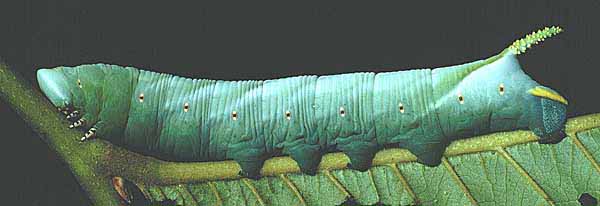
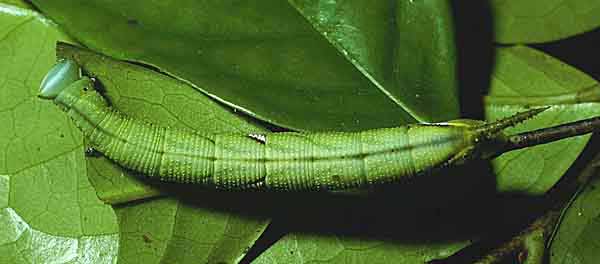
Eclosions generally occur 40-45 days after pupation. | 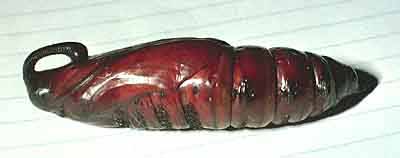
|
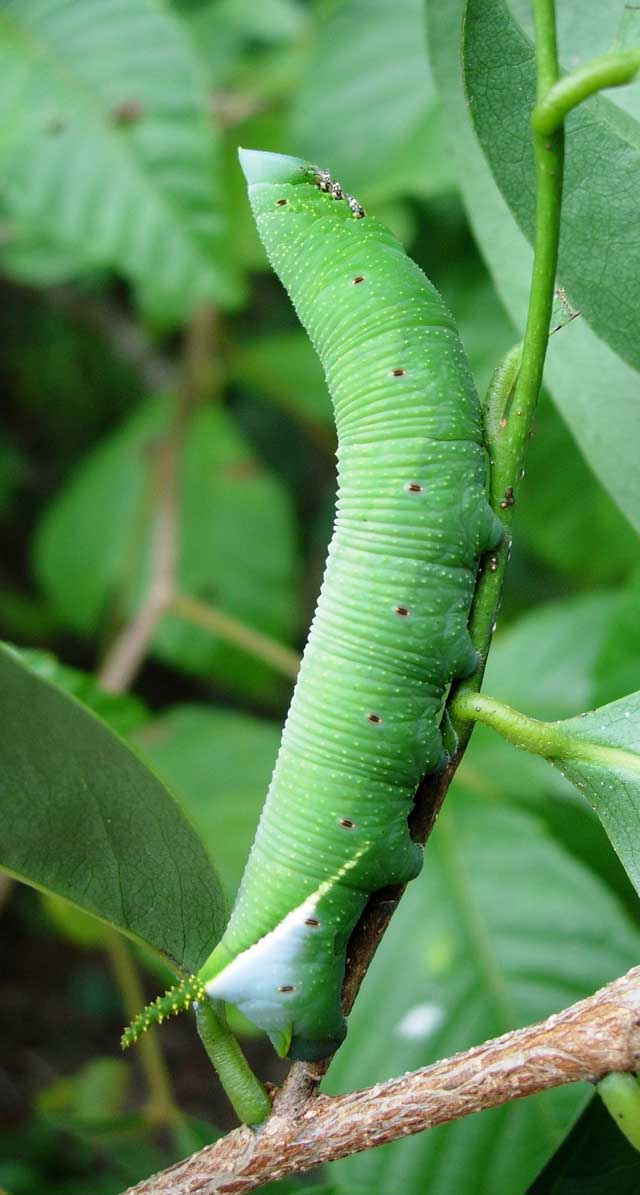
Amphonyx lucifer fifth instar (out of six), Playa del Carmen, Quintana Roo, Mexico,
courtesy of Ben Trott.
Ben Trott sends the Amphonyx lucifer/duponchel image posted above. He writes, "Found in its 5th instar just before going into its 6th instar. It died because
of parasites and didn't manage to shed its skin. I was about to ID this larva thanks to its last instar,
but never got the chance, I've been searching Annona reticulata ever since, with no luck, this species is not as common as
C. antaeus, and probably quite rare."
Use your browser "Back" button to return to the previous page.
Return to Sphingidae Index
Return to Sphingini Tribe
Use your browser "Back" button to return to the previous page.
This page is brought to you by Bill Oehlke and the
WLSS. Pages are on space rented from Bizland. If you would like to become a "Patron of the Sphingidae Site", contact Bill.
Please send sightings/images to Bill. I will do my best to respond to requests for identification help.
Enjoy one of nature's wonderments: Live Saturniidae (Giant Silkmoth) cocoons.
 | 
Show appreciation for this site by clicking on flashing butterfly to the left.
The link will take you to a page with links to many insect sites. |












